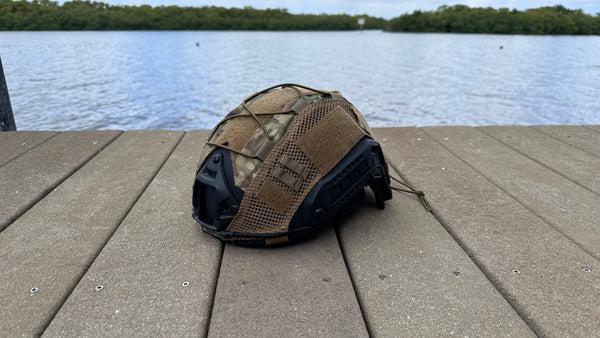Ballistic Helmets for the Average Joe
In a world where civil unrest and unpredictable scenarios can arise, the question of whether average civilians should invest in ballistic helmets often comes up in the tactical community. These helmets, traditionally used by military and law enforcement, have become sought after by civilian gear collectors. While there are some advantages to owning one, they are extremely limited. Here's a detailed look at the pros and cons of ballistic helmets for American civilians.
Advantages of Ballistic Helmets
1. Attachment Point for Night Vision Goggles: One of the primary advantages of a ballistic helmet is that it provides an excellent attachment point for night vision goggles. In high-stress or life-threatening scenarios, such as extreme civil unrest or a prolonged breakdown of law and order, having night vision capabilities can be a game-changer. The ability to move undetected at night can be crucial for survival, allowing for better escape, evasion, and potentially even defensive actions. In such scenarios, the ability to fight or flee without being detected at night is invaluable.
2. Ballistic Protection: Although the likelihood of a civilian needing bulletproof protection for their upper skull is low, having a ballistic helmet can offer peace of mind. Not only is it extremely unlikely that a ballistic helmet will save anyone's life who is reading this, it's also unlikely that any regular civilian will be wearing the helmet they do have if the situation arises that they need actually need it. It does however provides a layer of defense against some head injuries from shrapnel, debris, or other projectiles in high-risk environments (depending on the rating and style of the helmet itself).
3. Cool factor: 99% of civilians who own tactical helmets will experience the sole benefit of cool factor. Helmet pics for social media and wearing a helmet in alpha male "shooting classes" at the range will be the only advantage nearly everyone reading this article will receive from purchasing a tactical helmet. So, I personally challenge you to take that several hundred dollars and help someone in need with it. If you need help finding a way to help others feel free to reach out, we're constantly doing things for those who need it.
Disadvantages of Ballistic Helmets
1. Limited Versatility: The most significant drawback of ballistic helmets for civilians in the US is their limited versatility. Wearing a tactical helmet in everyday situations can draw unwanted attention and make one the target of profiling which will lead to a huge decrease in the effectiveness of any daily endeavors at the very least. They are not designed for casual use are highly impractical for most daily activities. Carrying a helmet in a "go-bag" everywhere one goes would be the only viable option, but still... not recommended for daytime use. There's almost no SHTF scenario where the trade-off between stealth and ballistic protection will tactically favor a helmet for civilian use. It will simply draw too much unwanted attention for individuals. Check out "the real greyman theory" as taught exclusively by Bone Tactical to learn implementation of successful tactics for operators without direct military backing.
2. High Cost: Ballistic helmets are expensive. For many, the cost may outweigh the benefits, especially if the helmet is rarely used. If you're in the market for a reasonably priced yet high-quality helmet, Tacticon Armament ( https://alnk.to/6TzfaVJ ) is a good option to consider.
3. Practicality in Real-Life Scenarios: In a genuine life-threatening situation, the chances of having a ballistic helmet on when needed are slim. Most civilians do not walk around wearing tactical gear (for good reason), and the helmet might not be immediately accessible during an unexpected crisis. The huge majority of self-defense situations that an American will encounter require very fast reaction time and don't allow for strapping on a helmet. A general rule of thumb is that if you have time to put your helmet on, as a civilian, you have time to reconsider what you're doing and get out of the situation safely... This makes the ballistic protection aspect of the helmet less practical for everyday use.
Conclusion: Weighing the Decision
For civilians considering a ballistic helmet, it's essential to understand the specific use cases and advantages, especially when paired with night vision systems like those from Armasight ( https://alnk.to/5ufQuI7 ). If you are preparing for scenarios that involve night-time operations requiring stealth and subterfuge, a ballistic helmet can be a valuable investment. But only if you're willing to dedicate the years of training and lifestyle changes that will be necessary for the addition of this piece of kit to be beneficial to you.
For most, the helmet's practicality and high cost make it a less justifiable purchase. It's crucial to assess whether the helmet will truly enhance your safety and operational effectiveness or if it's simply an expensive accessory that will see little use.
Ultimately, the decision should be based on a realistic evaluation of your needs and the specific scenarios you are preparing for. If the helmet fits into your broader strategy and you understand its limitations, it can be a useful tool. Otherwise, it might be more prudent to invest in other areas of preparedness and training that offer more tangible benefits.






